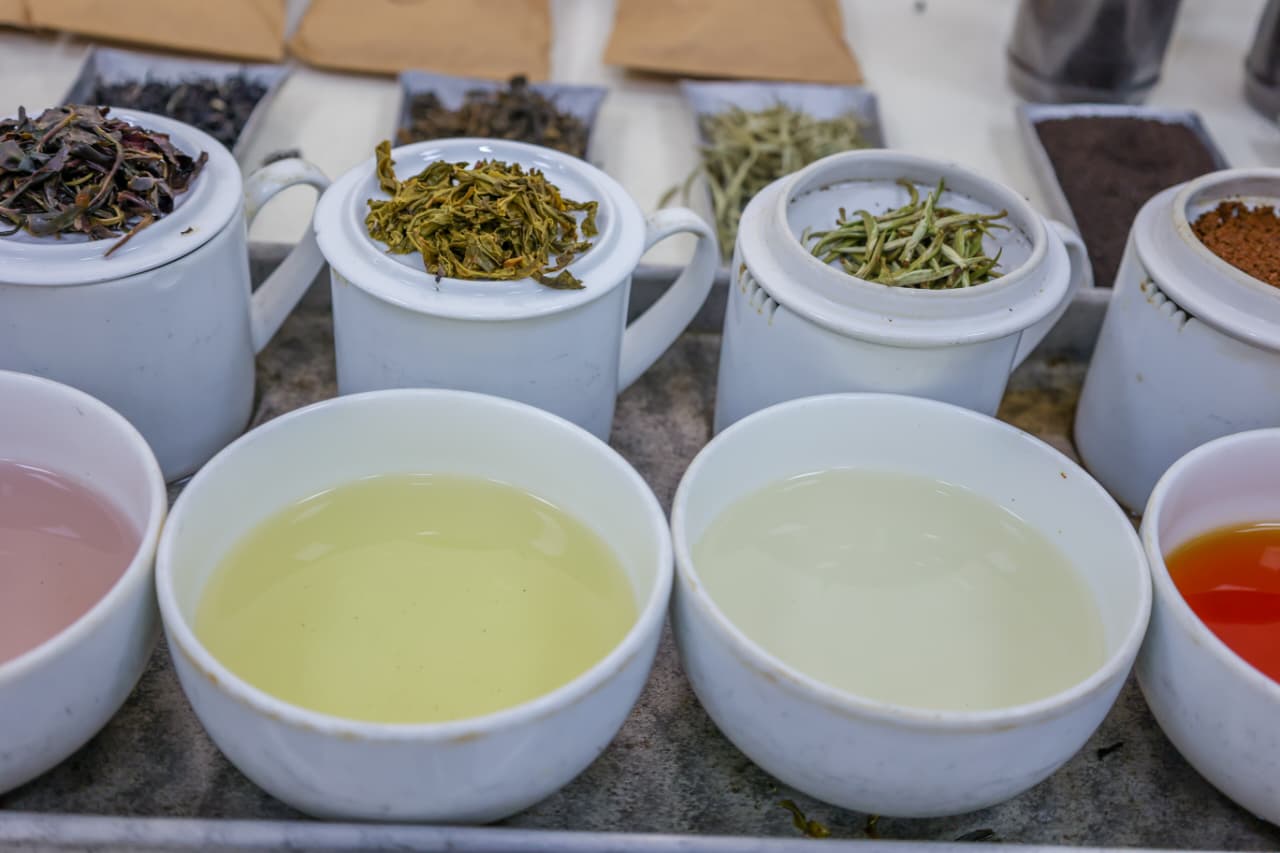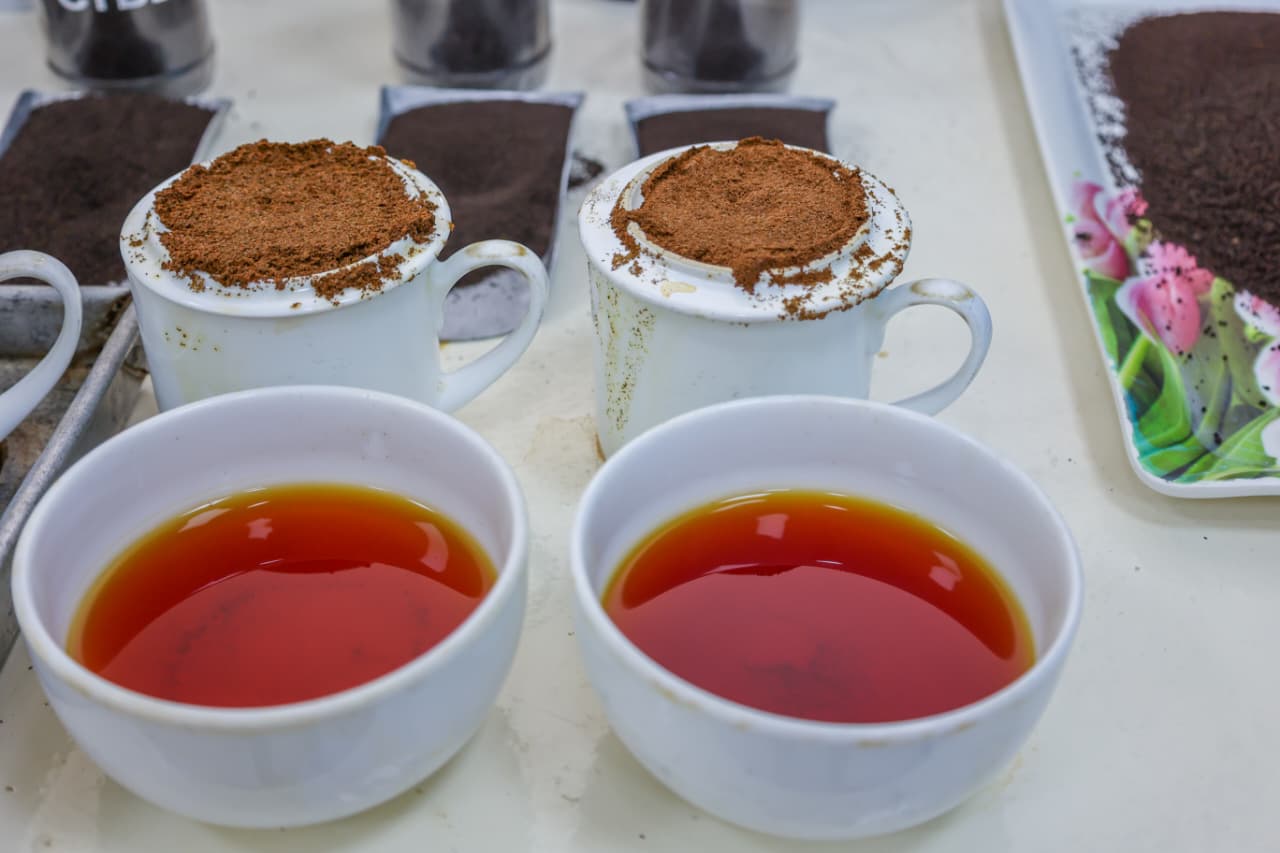
 Agriculture Cabinet Secretary Mutahi Kagwe tests some of the tea samples during the auction in Mombasa on September 24, 2025./HANDOUT
Agriculture Cabinet Secretary Mutahi Kagwe tests some of the tea samples during the auction in Mombasa on September 24, 2025./HANDOUTKenya’s long-awaited entry into the global premium tea market became a reality today as the first consignment of orthodox teas went under the hammer at the Mombasa tea auction, fetching prices more than double the average for traditional CTC teas.
CTC, also known as Cut Tear and Curl, is a tea processing method (mechanical) and with the speciality teas (orthodox), there's less mechanical damage to the leaves.
Agriculture Cabinet Secretary Mutahi Kagwe, who presided over the launch, called it “a giant milestone for the country’s 650,000 tea farmers and a bold new chapter for our tea industry.”
The inaugural sale featured 2,925 packages, about 91,800 kilos, of orthodox tea, with bids expected between USD 3 and USD 10 per kilo, far higher than the current USD 2.28 per kilo average for bulk CTC teas.
 Some of the tea samples during the auction in Mombasa on September 24, 2025./HANDOUT
Some of the tea samples during the auction in Mombasa on September 24, 2025./HANDOUT
“We are making history today,” Kagwe said.
“Orthodox and speciality teas are the future, and they offer farmers better earnings and Kenya a stronger place in world markets.”
 Some of the tea samples during the auction in Mombasa on September 24, 2025./HANDOUT
Some of the tea samples during the auction in Mombasa on September 24, 2025./HANDOUT
Already, 22 factories are licensed to process Orthodox teas, a number expected to nearly double to 42 by 2027, with 13 new manufacturing lines being rolled out under the Bottom-Up Economic Transformation Agenda (BETA).
Kagwe also revealed high-level talks to reopen the Iranian market, which was once a key buyer of Kenyan Orthodox tea but has faced trade hurdles in recent years. He urged traders to seize emerging opportunities in speciality markets long dominated by Sri Lanka, India and China.
 Some of the tea samples during the auction in Mombasa on September 24, 2025./HANDOUT
Some of the tea samples during the auction in Mombasa on September 24, 2025./HANDOUT
The CS asked industry players to support new Tea Levy and Tea Act regulations, which would fund international marketing, research, and product development to meet changing consumer tastes and climate challenges.
“Our mission is to lift total tea earnings to KSh270 billion by 2027,” he said.
“With Orthodox teas, that goal is within reach.”

















